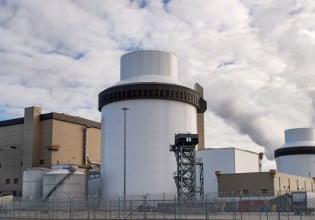Ford Motor Co. is planning to make software adjustments to improve the real-world fuel economy of its 2013-model hybrids. The changes are being offered to 77,000 owners of the 2013 Ford Fusion Hybrid and C-Max Hybrid and the Lincoln MKZ Hybrid, the auto maker said July 16. Hybrids for the 2014 model year will get changes at the factory. According to a report by Crain News Service, the Fusion and C-Max hybrids fell 17 percent to 21 percent short of Ford's promise of combined 47 mpg in tests by Consumer Reports magazine last year. The Fusion achieved 39 mpg and the C-Max averaged 37 mpg in tests of city and highway driving. The changes will not affect Ford's mpg labels.
The changes will include: Increasing the electric-only speed of the vehicles from 62 mph to 85 mph, which will allow increased use of electric-only mode on the highway. Modifying the active grille shutters to cut aerodynamic drag under a wider variety of driving and temperature conditions. Those include cold weather—and warm weather when the air conditioner is in use. Reducing the speed of the electric fan to reduce energy consumption. Shortening engine warm-up time by as much as 50 percent to enable electric-only driving. And modifying the climate-control system to minimize use of the air conditioning compressor and reduce energy use in cold weather.
"We believe these actions will provide our customers enhanced on-road fuel economy satisfaction," said Raj Nair, Ford product development chief, in a statement. Dealerships will modify the software, and dealers were being notified late July 16 about details of the program, said C.J. O'Donnell, Ford manager of electrified vehicle marketing. Ford officials say the work takes about a half day to perform.
Mr. Nair said there will be no alterations to hardware involved. Dealerships will begin performing the software modifications later this month. Customers will receive notification letters from Ford. The degree of improvement will vary depending on driving habits and other factors, Mr. Nair said, without providing any figures. "Customers should see the most improvement at highway speeds, during air conditioner use and operation in colder climates," he said.






